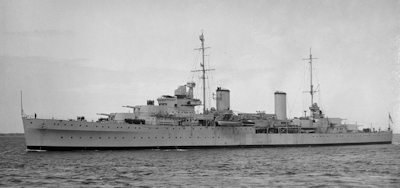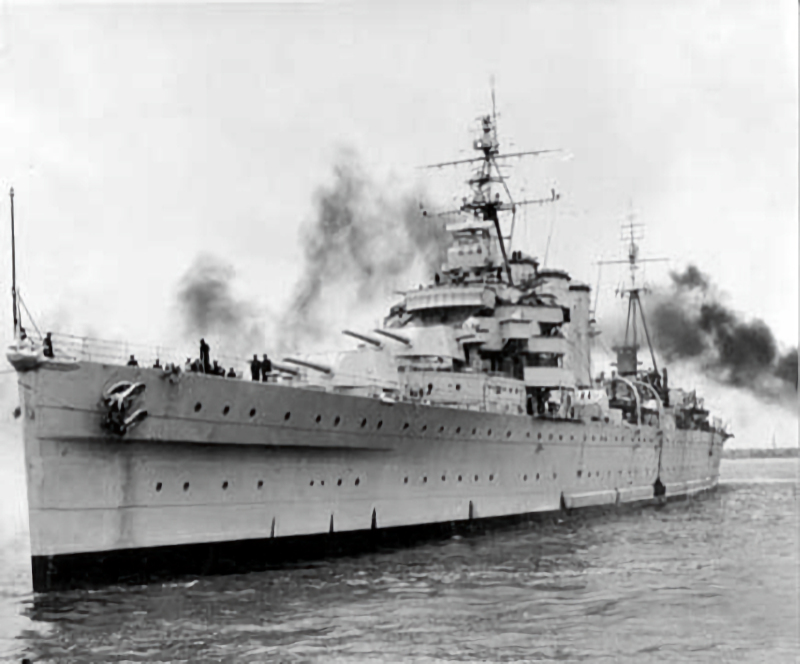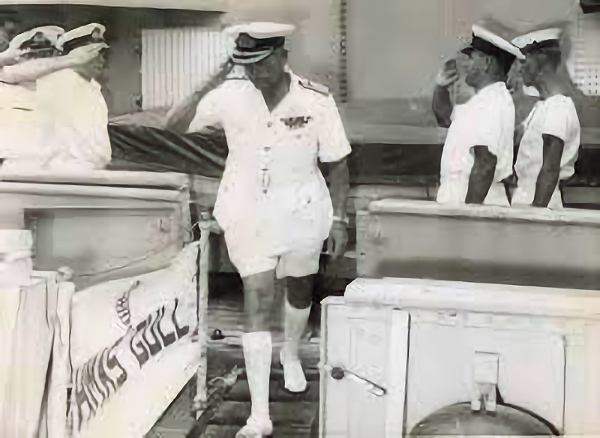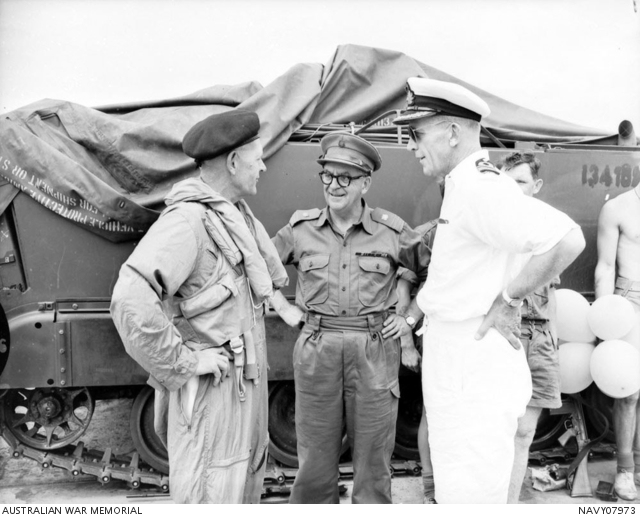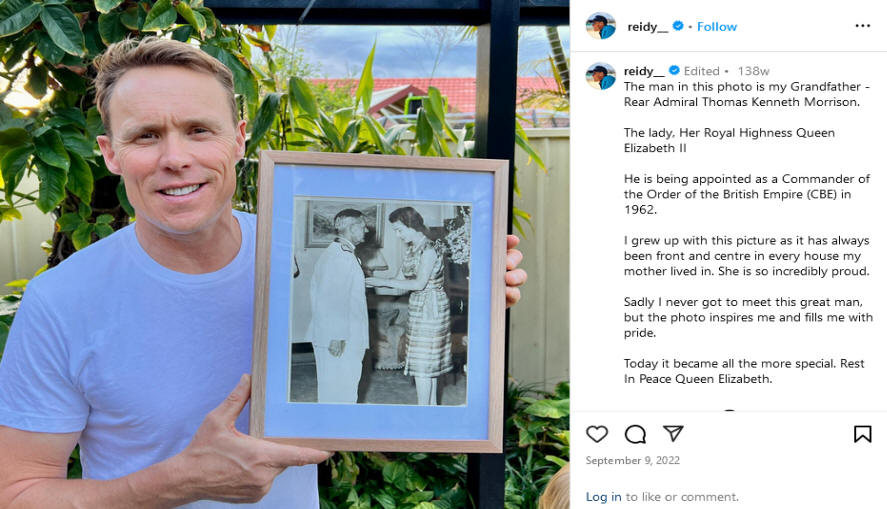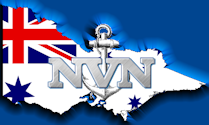
Navy Victoria
Network
Proudly supported by the Melbourne Naval Committee
Rear Admiral Thomas Kenneth Morrison CB CBE DSC MiD
Sub Lieutenant Morrison returned to Australia at the end of
1932 and joined HMAS Canberra in the New Year. He
transferred to HMAS Australia for three years, witnessing
the 1935 Silver Jubilee Review at Spithead. Promoted
to Lieutenant in February 1933, he specialised in torpedoes
before returning to Britain in 1936 to attend the long
course in torpedoes at HMS Vernon. On 25 June 1938 he
married Dorothy Cornish Hole at St Faith's Church of
England, Lee on the Solent, Southampton. He then
served in the cruiser HMS Apollo, which was recommissioned
in September as HMAS Hobart. From August 1940 Hobart formed part of the Red Sea Force with which Morrison was to see action in the Mediterranean, Red Sea and the Gulf of Aden. In April 1941 he was appointed as an Officer of the Order of the British Empire (OBE) for his organisation and direction of the combined operations room during the evacuation of Berbera, British Somaliland (Somalia), his citation noting that... ... 'his judgement was of a very high order. It is largely due to his initiative that so much war material was destroyed by his demolition parties.' In the first half of that year, Morrison filled the post of Squadron Torpedo Officer. He was promoted to Lieutenant Commander on 1 December. After the outbreak of war with Japan, he was present at the battles of the Coral Sea (May 1942) and Guadalcanal, Solomon lslands (November 1942). On 27 April 1943 Morrison became officer-in-charge of the Fairmile Motor Launch School, HMAS Rushcutter, Sydney; this was his only substantial wartime service ashore. He rejoined Australia in January 1944, resuming the post of Squadron Torpedo Officer. Australia participated in offensive operations against Japanese-held islands in the South-West Pacific, and took part in the Allied landings in the Philippines. During these operations the cruiser was heavily damaged by kamikaze attacks in the Battle of Leyte Gulf. Morrison, as the Damage Control Officer and First Lieutenant, took charge of the fire on the bridge and directed the firefighting in general. He also undertook the urgent task of reorganising the upper deck action stations affected by the fire. He was mentioned in despatches (MID) for... ...‘skill, determination and courage’ at Leyte Gulf (October 1944),
By 5 January 1945, Australia was back in action in the Lingayen Gulf covering the Allied invasion of Luzon Island. Here the ship suffered repeated suicide attacks; this time there was no doubt of the kamikaze nature of the Japanese planes. Australia was hit on 5th, 6th, 8th and 9th January, losing three officers and 41 ratings killed and one officer and 68 ratings wounded. Morrison showed exceptional devotion to duty and leadership throughout the period. He was always the first of the damage control party to appear at the scene of damage and his prompt handling of the situations presented, enabled resulting fires to be put out in short order. To add to his Leyte MID, he was awarded a Distinguised Service Cross (DSC) for... ...‘gallantry, skill and devotion to duty’ at Lingayen Gulf (January 1945). At the close of World War II, Morrison attended a staff course in Britain. Returning to Australia, he served as director of training and staff requirements in Navy Office, Melbourne (1946-48), and at the Royal Australian Naval College, Westernport, Victoria (1948-49). He had been promoted to Commander on 1 December 1946. In his first seagoing command, Morrison, in May 1950, became the inaugural Commanding Officer of the recently commissioned destroyer HMAS Tobruk. He assumed temporary command of HMAS Bataan in August 1951 for one month, before returning to Navy Office as director of manning (1951-52). On promotion to Captain in December 1952, he was appointed Deputy Chief of Naval Personnel, and in the following year became honorary Aide-de-camp to the Governor-General (1953-56). From 1954 to 1961 Morrison served in a succession of senior appointments, all of which groomed him for flag rank. Command of HMAS Quadrant as Captain of the 1st Frigate Squadron (1954-55) was followed by a diplomatic posting to Washington DC, as naval attaché (1955-57). He then proceeded to Britain for the senior officers' technical course (1957) and to attend the lmperial Defence College in 1958. Returning to Australia, Morrison assumed command (1958-59) of the RAN flagship, HMAS Melbourne; his time in command included one deployment to the British Commonwealth Far East Strategic Reserve. He was then appointed in command (1960-62) of HMAS Albatross, the Naval Air Station, Nowra for which he was appointed a Commander of the Order of the British Empire (CBE).
In the 1960s the Navy was becoming more engaged in Southeast Asia, especially in assisting Malaysia and providing support to the United States Seventh Fleet during the Vietnam War. On 7 January 1962 Morrison was promoted to Rear Admiral and appointed Deputy Chief of Naval Staff at Navy Office, Canberra. He became Flag Officer Commanding HM Australian Fleet in January 1965 and a year later Flag Officer in Charge, East Australia Area (1966-68). His contributions to the Navy, still recovering from Voyager, in these two postings gained him an appointment as a Companion of the Order of the Bath (CB) in 1967.
Rear Admiral Morrison was seconded to the Prime Minister’s Department in March 1968 before retiring from the service on 30 October 1968 with a most impressive set of post-nominal recognitions for his long service in peace and war. Two years later he served as the Australian Commissioner-General at Expo ’70 in Osaka, Japan. Survived by his four children, Thomas Kenneth Morrison died at Darlinghurst, Sydney, on 20 April 1983 and was cremated after a funeral service at the naval chapel, HMAS Watson.
Sources: Compiled by Laurie Pegler |
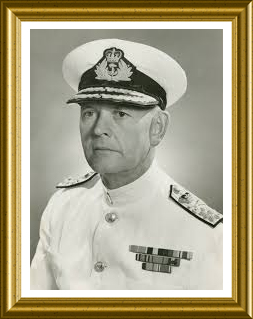 Thomas
Kenneth Morrison was born on 31 October 1911 at Windsor,
Victoria. His father was Leonard Neil Morrison, a
former Tasmanian Rhodes scholar and modern language
instructor at Melbourne Grammar School. Entering the
Royal Australian Naval College, Jervis Bay, in 1925, as a
Cadet Midshipman, Morrison excelled as a sportsman,
representing the college in cricket, rugby, hockey, tennis
and rowing. He graduated in 1928 and served as a
Midshipman for one year in HMAS Australia before travelling
to England for seagoing training in HMS Ramillies and
professional courses ashore. There he became one of
only two Australians to represent the Royal Navy in cricket.
Thomas
Kenneth Morrison was born on 31 October 1911 at Windsor,
Victoria. His father was Leonard Neil Morrison, a
former Tasmanian Rhodes scholar and modern language
instructor at Melbourne Grammar School. Entering the
Royal Australian Naval College, Jervis Bay, in 1925, as a
Cadet Midshipman, Morrison excelled as a sportsman,
representing the college in cricket, rugby, hockey, tennis
and rowing. He graduated in 1928 and served as a
Midshipman for one year in HMAS Australia before travelling
to England for seagoing training in HMS Ramillies and
professional courses ashore. There he became one of
only two Australians to represent the Royal Navy in cricket.